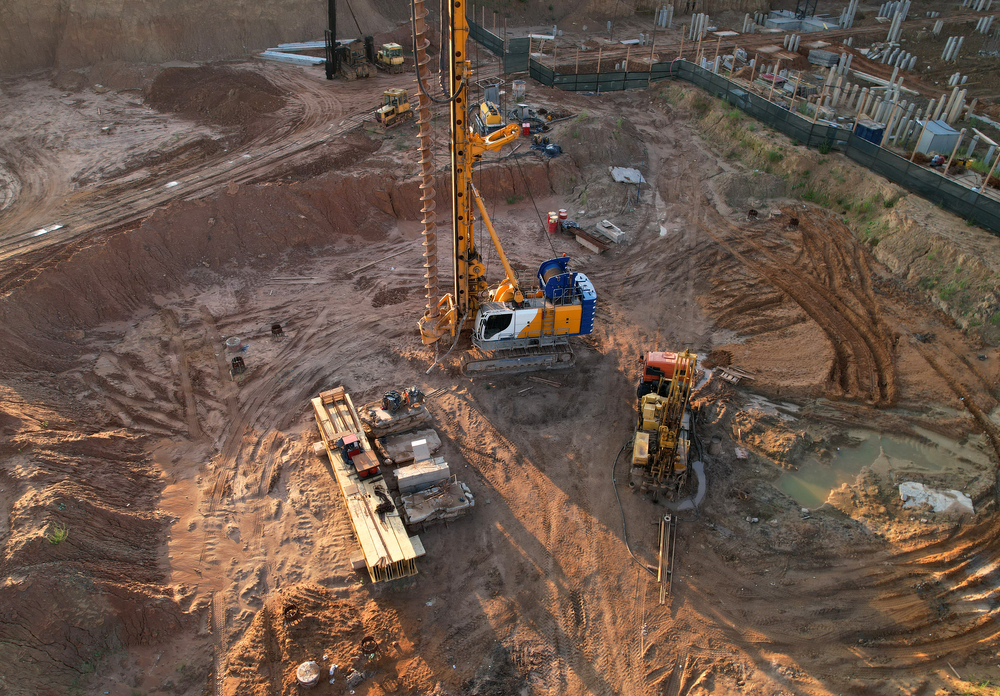The 25-Second Trick For Geotheta
The 25-Second Trick For Geotheta
Blog Article
The 4-Minute Rule for Geotheta
Table of ContentsThe Best Guide To GeothetaGetting My Geotheta To WorkThe Best Strategy To Use For GeothetaSee This Report on Geotheta
They collaborate with civil designers, architectural designers, architects, and other professionals to incorporate geotechnical factors to consider into the general project style and building process. This calls for reliable team effort, sychronisation, and interaction to make certain that the geotechnical elements align with the project purposes and satisfy regulative requirements.Mining & Materials Engineering: Concepts of boring, penetration prices, and elements impacting the choice of exploration technique. Blasting methods in surface area and underground functions. Mechanical and continual techniques to fragmentation, including longwall shearing and fullface boring.
Modelling of fragment and particle size distributions; comminution as a transfer function. Comminution innovation: crushing, grinding, dimension classification. Integrated evaluation of fragmentation and comminution operations. Provided by: Mining & Materials Design.
Geotheta Fundamentals Explained
Bachelor's level programs in civil, geotechnical, geological, and environmental engineering generally last four years and include general education and learning courses in English, social scientific research, and the humanities, along with programs in innovative mathematics, architectural geology, and liquid mineralogy. (https://canvas.instructure.com/eportfolios/3071866/Home/Why_Geotechnical_Engineers_Are_Essential_for_Your_Construction_Projects)
Geotechnical design involves the analysis of the dirt and rock conditions at a certain site, and their ramifications for the development of that site. As a lot of frameworks count on the ground for assistance, it is without shock that a comprehensive understanding of the ground problems, and the viability of structure systems, are important to the long-lasting security and efficiency of the structure or structure.
Specialising in the investigation of geological formations and ground behavior, geotechnical designers execute scientific investigations and testing to comprehend the influence these geological developments might carry the design and building of building, civil and facilities jobs. This experience is vital for the layout and building of structures, roadways, passages, dams, bridges, and supply of water and sewer system.
The geotechnical team at Douglas Partners consistently talk to designers, design engineers, programmers, and home builders to make referrals on layout and advancement propositions to ensure that the built structures are appropriately created for the ground problems. The style of footing systems needs to take into consideration the weight of the framework, the capability of the ground to support that weight with each other with activity tolerances and reliable building and construction.
Getting The Geotheta To Work
This task is substantially streamlined by the use of our Douglas Map geospatial system which makes this details easily accessible in a very easy to utilize internet browser user interface. A geotechnical engineer will route the boring of boreholes and examination pits to accumulate soil and various other samples, and additionally examine surface functions and ground exposures to develop a geotechnical version of the subsurface problems.
Depending upon the task type and ground problems came across, laboratory testing might to name a few things examine toughness, compressibility, sensitivity and/or leaks in the structure of dirt and rock samples. After this data is accumulated and collected, the outcomes are used for a geotechnical design of the website, which is normally provided as areas throughout the website.

A geotechnical examination naturally can just evaluate the ground problems at the places pierced or excavated. Natural variants in dirt and rock problems can happen across a site and between test areas. It is consequently good method that the geotechnical designer be preserved throughout construction of the job to supply on-site confirmation that the ground problems run into are consistent with the expectations and advice offered in the geotechnical investigation report.
9 Simple Techniques For Geotheta
Geotechnical designers utilize their comprehensive understanding of soil and rock to assess danger and fix issues on diverse framework projectsGeotechnical engineering is a specialist branch of civil design which checks out the behavior of earth products and the application of soil and rock mechanics. Geotechnical Engineers. As a geotechnical designer, you will certainly evaluate the physical, mechanical and chemical residential or commercial properties of dirt and rock in order to create foundations, retaining frameworks and earthworks
Geotechnical engineering is very closely linked to and overlaps with, both design geology and ground engineering - https://www.mixcloud.com/geotheta/. It's possible to be experts in geotechnics or benefit a geotechnical business however be called an engineering geologist or a ground engineer. As a geotechnical designer, you'll require to: develop and maintain partnerships with customers and other professionals associated with the site, throughout each projectmaintain security standards on website bear in mind price ramifications when you make recommendationsstudy geological maps and aerial pictures from a variety of sources and from various time periodsexamine building and construction prepares to see how feasible they are based upon your understanding of the siteinvestigate dangers or geological risks for the sitesearch for eco sensitive features, such as garbage dump start to create accurate and expository ground modelsplan area investigationsdrill and analyse examples of bedrock, soil, groundwater and added materials manage other specialists on sitesolve technical concerns as they develop, such as unexpected frameworks at drill sitesmonitor problems during and after building and construction to make certain frameworks are stable in the brief and lengthy termadding information gathered on website to your preliminary researchcreating geotechnical calculations, illustrations, and two or three-dimensional computer system designs interpreting the datamaking recommendations regarding the recommended use the website

Report this page